 Movies and TV
Movies and TV  Movies and TV
Movies and TV  Creepy
Creepy 10 Lesser-Known Shapeshifter Legends from Around the World
 Animals
Animals 10 Amazing Animal Tales from the Ancient World
 Gaming
Gaming 10 Game Characters Everyone Hated Playing
 Books
Books 10 Famous Writers Who Were Hypocritical
 Humans
Humans 10 of the World’s Toughest Puzzles Solved in Record Time
 Mysteries
Mysteries 10 Scientific Mysteries We Don’t Fully Understand
 Weird Stuff
Weird Stuff 10 Celebrities Who Have Admitted to Alien Encounters
 Our World
Our World 10 Surprising Secrets of Notre Dame Cathedral
 Miscellaneous
Miscellaneous 10 Intriguing Origins of Popular Carnival Rides
 Movies and TV
Movies and TV 10 Actors Dragged out of Retirement for One Key Role
 Creepy
Creepy 10 Lesser-Known Shapeshifter Legends from Around the World
 Animals
Animals 10 Amazing Animal Tales from the Ancient World
Who's Behind Listverse?

Jamie Frater
Head Editor
Jamie founded Listverse due to an insatiable desire to share fascinating, obscure, and bizarre facts. He has been a guest speaker on numerous national radio and television stations and is a five time published author.
More About Us Gaming
Gaming 10 Game Characters Everyone Hated Playing
 Books
Books 10 Famous Writers Who Were Hypocritical
 Humans
Humans 10 of the World’s Toughest Puzzles Solved in Record Time
 Mysteries
Mysteries 10 Scientific Mysteries We Don’t Fully Understand
 Weird Stuff
Weird Stuff 10 Celebrities Who Have Admitted to Alien Encounters
 Our World
Our World 10 Surprising Secrets of Notre Dame Cathedral
 Miscellaneous
Miscellaneous 10 Intriguing Origins of Popular Carnival Rides
10 Bizarre Claims Made To Disprove Evolution
Without getting too deep in the weeds in explaining the Theory of Evolution, it is an established scientific theory that explains the evolution of species. It’s one of those things people who understand it fully support, those who kind of get it don’t consider, and the people who see it as a rejection of their faith obsessively oppose.
Over the years since Darwin and Wallace established an understanding of Natural Selection, which is the basis for the theory, many strange and bizarre claims have emerged trying to dispute it. Some are well known while others are only found in the deepest, darkest recesses of the Internet. Here are the ten most bizarre claims made by people trying to prove Evolution is “Just a theory.”
See Also: 10 Ways Evolution Made Humans Worse
10 Evolution Is Just A Theory
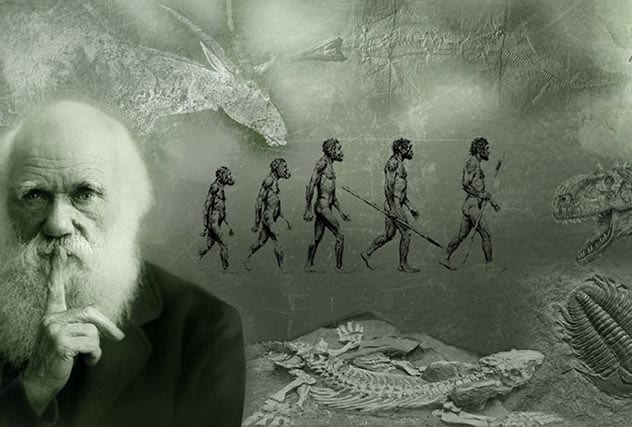
As any scientist will tell you, a theory in science is not the same thing as that idea you get when you’re trying to figure out who stole your pudding out of the shared office fridge. In science, a theory is a collection of observable and testable facts compiled over a usually extended period of time by a wide number of people. Consider the Theory of Gravity or the Theory of Planetary Motion. These aren’t guesses people like Copernicus, Newton, and Kepler made while sitting in the tub one evening… They collected data over years of study and compiled them into a theory that has since been tested, proven, disproven, added to, and changed.
The beauty of a scientific theory is that it is not set in stone. Nothing is absolute, as any new observation can change it. The current Theory of Evolution contains observations made that were impossible in Darwin and Wallace’s day. With new technologies and advancements allowing for the study of individual cells, DNA, and other aspects of life, the theory has changed significantly since it was first forwarded in the 19th century. The claim that “Evolution is just a theory” serves only to prove the person saying it doesn’t understand what a theory is—it doesn’t prove Evolution isn’t true.[1]
9 The Fossil Record Is Incomplete
Of course, the fossil record is incomplete. When an organism is fossilized, it has essentially won the prize few animals or plants ever achieve. Fossilization is a truly rare event, which only occurs when the perfect situation allows for it. An organism has to be in the right place at the right time for their body to be fossilized, and that doesn’t guarantee the fossil will survive for millions of years to be found by humans. Because of this, the tiniest fraction of living organisms are ever fossilized and found. Granted, we have found millions of fossils, but if you consider the number of living organisms that have existed on the planet since life first arose, the number is infinitesimally small.
Because fossils are so rare, we are constantly finding new organisms that fit into the record to help explain the changes seen over time that lead to new species arising. Whenever this occurs, it provides new answers, but also creates new questions. Those who don’t believe in evolution point to these so-called “gaps” as the reason Evolution is false. The animated series Futurama once did a great bit on how each time a new species was found to fill a gap, a new gap was created. There will always be “missing links” in the fossil record, but none that disproves the theory.[2]
8 It Relies Too Heavily On Chance Making It Mathematically Impossible
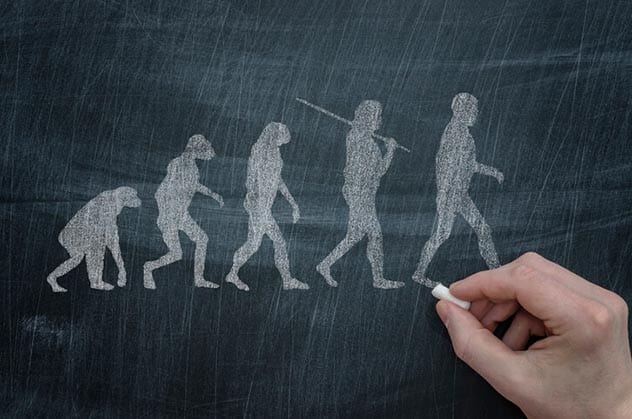
Back in 1973, an article was published in an issue of Acts & Facts, which outlined the Creationist stance of “The Mathematical Impossibility of Evolution.” The article fails in a number of respects, but like most arguments against evolution in favor of the Biblical story of Creation, it shows that the author, Henry M. Morris, Ph.D. didn’t fully understand the theory he was attempting to disprove. Despite this, people have raised the mathematical impossibility of evolution ever since.
The postulation argues that because mutations occur randomly, and only the so-called “good” mutations are retained, the time needed for single-cell organisms to evolve into mankind is impossible. Dr. Morris threw some numbers out, which suggests that an organism with 200 successive mutations would require a chance of on in 1060 ((10 to the 60th power)). It seems his position relies on the total misunderstanding of how natural selection works, but this hasn’t stopped people from raising this issue whenever they argue against the Theory of Evolution.[3]
7 Evolution Has Never Been Observed
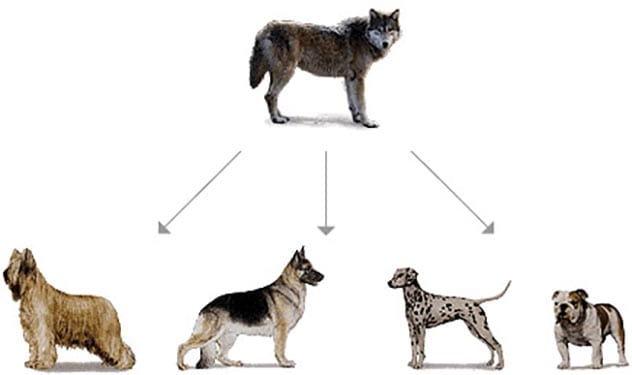
The argument that evolution has never been observed, is not testable, and isn’t falsifiable is patently false. Regardless, this claim comes up a lot on the Internet, and it generally stems from the incorrect assumption that an animal of one species has offspring of a completely different species. This isn’t how evolution… or any aspect of biology works. These claims are often brought up with another misconception related to microevolution and macroevolution. The former looks at changes within species over time, while the latter involves changes that may result in speciation.
Macroevolution can be observed in the fossil record, and through DNA analysis, though it does take a considerable amount of time, but microevolution can be observed. Because microevolution revolves around the study of changes in gene frequency within a population, it can be observed in much shorter periods of time. Insects work well in this area due to their short life cycle. One example that’s easy to explain shows how populations of insects pass on a gene responsible for pesticide resistance to subsequent generations. This reduces the efficacy of pesticides and shows how the DNA changes from one generation to the next, ultimately rendering that pesticide ‘mostly harmless’ to the population.[4]
6It Defies The Second Law Of Thermodynamics

The Second Law of Thermodynamics states that “the state of entropy of the entire universe, as an isolated system, will always increase over time. The 2nd Law also states that the changes in the entropy in the universe can never be negative.” When the 2nd Law is brought up by people attempting to disprove evolution, all they manage to do is prove they don’t understand the 2nd Law. The argument suggests that living cells could never have evolved from inanimate chemicals, and similarly, multicellular life couldn’t have evolved from protozoa due to an increase in complexity.
The misunderstanding would also apply to something like a snowflake, which is a complex structure that forms from disorderly parts, but as we all know, snowflakes exist. Essentially, the misunderstanding of a closed system is the reason this argument is often cited. The planet Earth is not a closed system, as energy from the sun can increase complexity. Similarly, multicellular life can increase in complexity by consuming—absorbing lower forms of life, which effectively balances out the purported decrease in entropy across the universe.[5]
5Not All Scientists Support It So It Must Be False
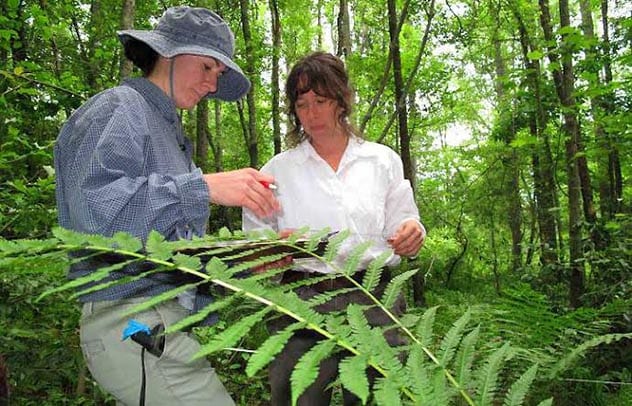
This argument always comes about when someone attempts to poke holes in the Theory of Evolution by saying it isn’t supported 100% by scientists. That may be true, but if only four out of five dentists can get behind a product, which amounts to 80% support, does that mean the product is absolutely worthless? Conversely, in terms of biologists who understand and accept the Theory of Evolution, it’s more like 98%. Frankly, it’s not possible to work in biology without a proper understanding of Evolution, but that’s not necessarily true of scientists who work in other fields, which may account for the 2%.
The numbers of people who don’t work in a scientific field are far different. Roughly three-quarters of Americans believe that there is a scientific consensus regarding the evolution of life. When people who don’t support the Theory of Evolution were polled in a Pew Research Study, 46% believed there was a scientific consensus, while 52% believed that most biological scientists believe humans (and other forms of life) have always existed in their present form. The difference is staggering, but it’s easy to see why this argument is often raised in an attempt to disprove evolution. Of course, to be intellectually honest we do need to say that while a lack of consensus doesn’t disprove a theory, a total consensus doesn’t prove a theory either. Science is not a popularity contest.[6]
4 Evolution Cannot Explain How Life First Appeared On Earth
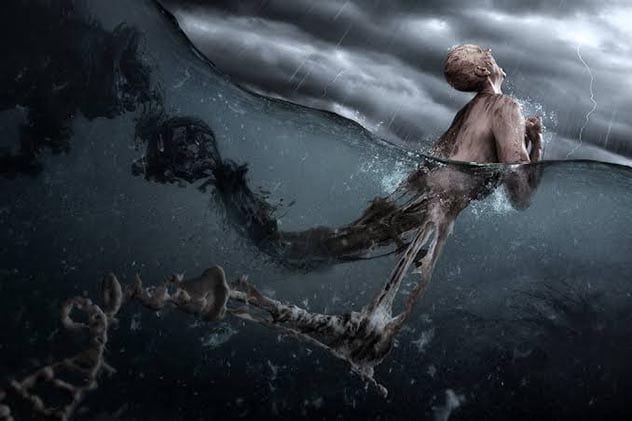
Evolution is the study of how life changes over time, it has absolutely nothing to do with the origin of life, but most people who don’t understand what evolutionary theory is, bring this argument up often. Evolution certainly has a lot to do with what happened to life after it first appeared, but it doesn’t deal with how life got there in the first place. The area of study that revolves around the origin of life is called abiogenesis, and it deals with the prevailing scientific hypothesis that a single event caused non-living materials to transition into living ones, though that event has yet to be identified.
That’s when evolution would step into the equation, not before, and it doesn’t attempt to explain how life started. Even if the scientific community accepts the theory that life began through some extraterrestrial or supernatural means, the evolution of organisms over the following 3.5+ billion years is observable and quantifiable. That being said, biochemists have discovered a means by which primitive nucleic acids and amino acids may have formed and organized into self-replicating units, which could have been the event by which inanimate ingredients formed into the foundational elements of cellular biochemistry, but that’s not the Theory of Evolution.[7]
3 If Humans Evolved From Monkeys Then Why Are There Still Monkeys?

For some reason, this question is one that is often repeated by people attempting to disprove evolution, but the answer is simple. Humans didn’t evolve from monkeys. That should settle the argument, but sadly, it rarely works in quieting the question. Humans are hominids, which is a family of animals known as the great apes. These include humans, chimpanzees, orangutan, gorillas, and bonobo. Humans remain the only surviving species of the genus homo, which once included Neanderthals, Homo erectus, and many more.
Monkeys, on the other hand, are simians who do share a common ancestor with humans and other members of the primate order. Humans are most closely related to chimpanzees, who share a common ancestor dating back some six to seven million years. Monkeys and humans’ common ancestry extends much further in the fossil record. The common ancestor between monkeys and humans lived about 25 million years ago. This argument has no basis in fact and instead relies on a misunderstanding of how speciation works in transitioning one species to another.[8]
2 The Banana Argument

Ray Comfort is a New Zealand creationist and televangelist, who once used a banana as an example of the so-called theory of Intelligent Design. Comfort attempted to explain that “the banana and the hand are perfectly made, one for the other.” He believed that the human hand was designed to hold a banana, which was shaped perfectly for our enjoyment. He further declared the peel was nature’s way of keeping bananas safe and edible for people, it has a tab at the top for easy opening, and it, therefore, disproved evolution and proved God’s existence. Here’s the problem with his claim; modern bananas are the product of years of human-imposed genetic manipulation through cross-pollination, and if it proves anything, it’s that species can change over time, as bananas are an example of human-manipulation of evolutionary mechanisms.
Wild bananas are small, filled with seeds, and they taste terrible. Eventually, Comfort admitted his mistake/misunderstanding of how modern bananas came to be, saying he “was not aware that the common banana had been so modified through hybridization.” Intelligent Design was created as an attempt at bringing Creationism into the classroom by claiming it was another theory that could explain the origin of life. It didn’t take long for lawsuits and common sense to win in the end, but Creationists still try to push Intelligent Design as a viable theory, which should be taught in biology classrooms.[9]
1 The Crocoduck
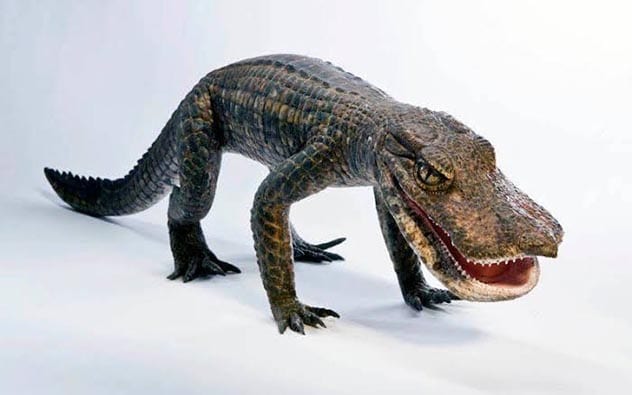
Unfortunately, Ray Comfort’s use of the banana to explain his beliefs against evolution didn’t stop with the fruit. Comfort paired up with Kirk Cameron of Growing Pains fame to refute the existence of transitional fossils, which are organisms found in the fossil record showing traits of a parent and descendant species. They are useful in showing how one species transitioned over a long period of time into another, but Cameron and Comfort completely misunderstood what transitional fossils were when they pulled out a picture of what they called a “crocoduck,” claiming that evolution was false because nobody had ever found one. Cameron appeared as an expert on Fox News, where he made his claim, and the Internet had a field day.
Amusingly, Cameron and Comfort’s creation came back to bite them in the rear when an organism was discovered, showing traits of both ducks and crocodiles. In 2003, a new species of ancient crocodile was found and later identified, which had a large, flat snout reminiscent of a duck’s bill. The new species was named Anatosuchus, which translates into “duck crocodile,” or, in Cameron’s words, “A crocoduck!” Technically, it’s not a duck’s bill, as it includes rows of teeth and is entirely crocodilian, but you can’t say paleontologists didn’t have a chuckle when the crocoduck entered the lexicon.[10]
For more lists like this, check out 10 Fascinating Facts About Human Evolution, and 10 Evolutionary Advantages Of Seemingly Weird Body Functions








